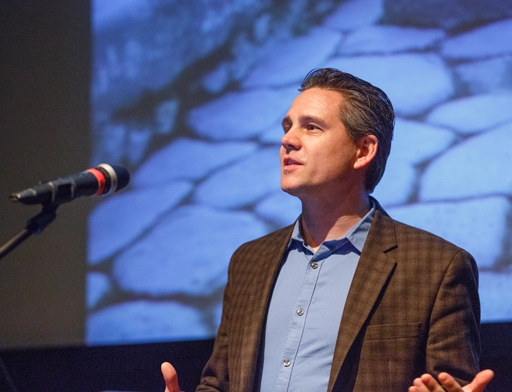Eric Poehler. Digital Technologies and the Transformations of Archaeological Labor
The use of computers and other digital technologies have had a long history in classical archaeology, but in the last decade advances in software and especially hardware have begun to transform the way that archaeologists work in the field. This paper explores three examples of this phenomenon from my perspective as co-director, director, or assistant director of three different research projects between 2010 and 2019. The first project, the Pompeii Quadriporticus Project (2010-2013) was a non-invasive, architecturally focused research project dedicated to understanding one of Pompeii’s largest and longest neglected monumental buildings. Each season we used the (then new) iPad tablet as our mobile database and journal and saw a remarkable improvement in workrate using this device. This efficiency drove us to expand and intensify our study of the Quadriporticus and especially its columns. The second example comes from two sister projects, the Pompeii Bibliography and Mapping Project (PBMP, 2013-present) and the Pompeii Artistic Landscape Project (PALP, 2018-present), which together form an important online digital research platform for the study of ancient Pompeii. For excavators at Pompeii, PBMP and PALP will offer in-field access to a 23,000 citation bibliography and an exhaustive catalog of comparative artistic iconography. Such potential access, however, creates is own pressures and questions: when in the course of the excavation should these resources be consulted? Who should be responsible for that research? From where will the time for that research come? Some answers to those questions may be developing at the Tharros Archaeological Research Project (TARP, 2019-present). TARP’s deep investment in pre-season database development, finds processing procedures, and especially in an integrated photogrammetry-to-GIS workflows is revealing new opportunities for excavators as labor once assigned to them, including initial artefact processing and drafting procedures, is shifted to specialists armed with their own efficient digital technologies. We believe this reorganization will offer much needed time for excavators to analyze their data and articulate well-founded interpretations regularly during the course of excavation. As a whole, these projects trace one history of digital technology’s impact on the organization of archaeological labor, from intensifying work due to increased efficiency, to increased pressure due to newly available data sources, to a reorganization of in-field procedures that at once takes advantage of efficiencies and frees up labor at the trench edge.

